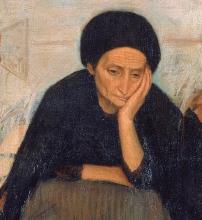Sticking It to the Man
Sam Shuman’s essay Of Mice and Hasidic Men: Reb Shayele as Populist Patron Saint in our latest issue opens new worlds of understanding at the juncture of faith, magic, and Haredi popular culture. The article unveils the remarkable story of an ultra-Orthodox figure known as Reb Shayele (né Yeshaya Steiner in 1851 near the Hungarian-Galician border).
